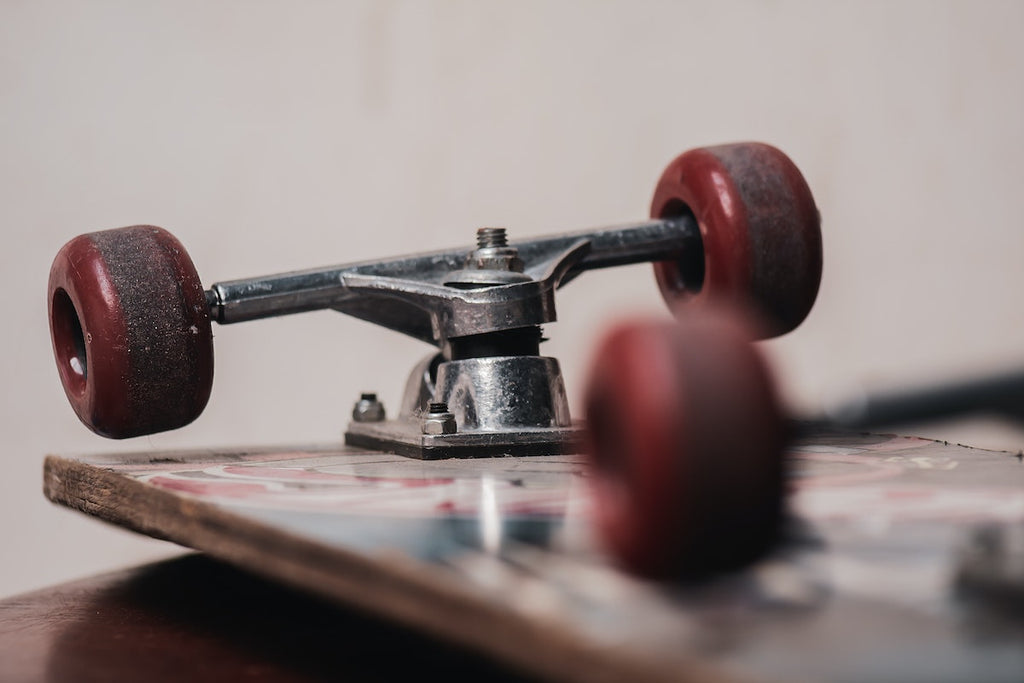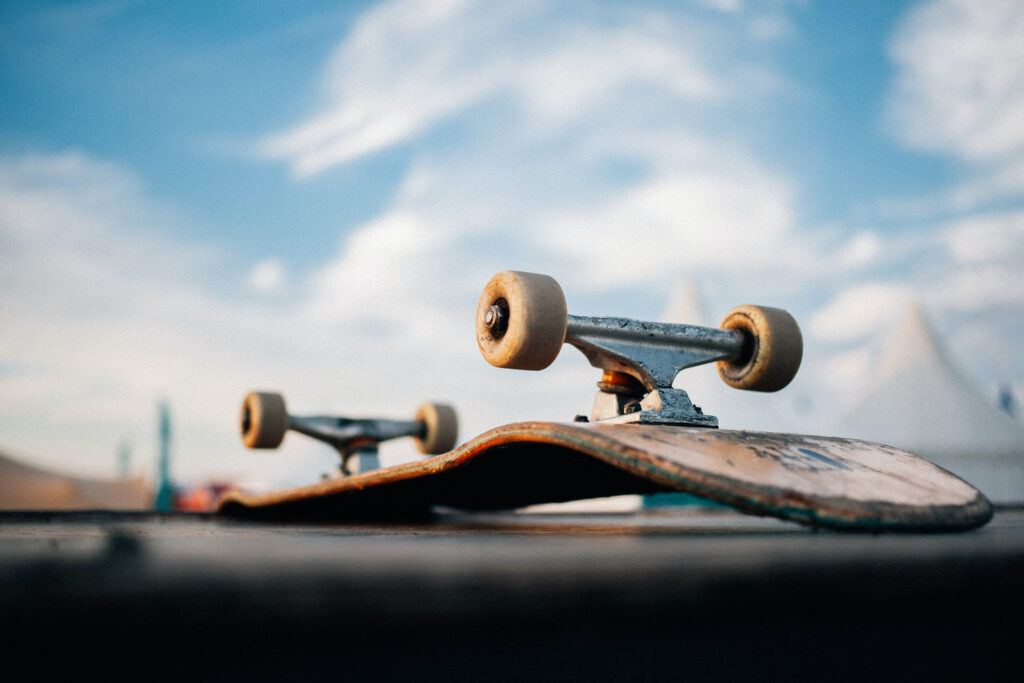Replace your skateboard wheels when they start to wear down or become too small. Worn or small wheels can affect your ride and lead to accidents.
Skateboarding is one of the most popular sports around the world, and it requires proper care and maintenance for all its components. Skateboard wheels, in particular, are an essential part of the board that determines how it functions and performs. Over time, skateboard wheels wear out and lose their grip, causing a skater to lose control, slip, or suffer injuries. Therefore, it’s crucial to keep an eye on the signs that you may need to replace the wheels and understand when it’s time to do so. In this article, we’ll highlight the key indicators that show you should replace your skateboard wheels, how to measure them, and what factors to consider when buying new ones.

Credit: boardblazers.com
Factors That Affect The Lifespan Of Skateboard Wheels
Skateboarding is an exciting activity that requires different skills that skateboarding enthusiasts like you enjoy doing. One critical aspect of skateboarding is ensuring that your board is in excellent condition, and the wheels’ condition is no exception. Skateboard wheels tend to wear down over time, which poses a danger when riding your skateboard.
But when should you replace your skateboard wheels, and what factors affect their lifespan?
Several factors influence the lifespan of skateboard wheels.
- Type of skateboard wheels and lifespan
- Hardness
- The wheel’s diameter
- The material it’s made from
- Skateboarding style and wheel lifespan
- Freestyle skateboarding
- Downhill skateboarding
- Terrain and environment’s role in skateboard wheels life
- Rough pavements
- Uneven surfaces like dirt roads
Now, let’s delve deeper into each factor to determine how it affects the lifespan of your skateboard wheels.
Type Of Skateboard Wheels And Lifespan
The type of skateboard wheels you use plays a crucial role in determining their lifespan.
- Hardness: the hardness of skateboard wheels is measured using the durometer scale. The higher the number, the harder the wheel. Hard wheels tend to wear down less quickly compared to soft wheels. However, hard wheels make it challenging to maneuver, and they glide less smoothly, increasing the risk of falling.
- The wheel’s diameter: skateboard wheel diameter is also an essential factor in determining the lifespan of skateboard wheels. Smaller wheels typically wear down faster than larger wheels. Smaller wheels experience more contact with the ground and curbs, causing the wheels to erode faster. Larger wheels, on the other hand, offer more room to wear down without affecting the wheel’s overall performance.
- The material it’s made from: skateboard wheels are made using different materials, but the most common are polyurethane, polyethylene, and pvc plastics. Polyurethane wheels are the most popular as they offer excellent grip and are durable, which prolongs their lifespan. Pvc plastic wheels are the least durable, which results in a shorter lifespan.
Skateboarding Style And Wheel Lifespan
Your skateboarding style also plays a crucial role in determining the lifespan of your wheels. Two types of skateboarding styles include fiestyyle and downhill skating.
- Freestyle skateboarding: freestyle skateboarders tend to perform tricks and stunts, which puts more pressure on the wheels. This extra stress causes the wheels to wear down faster than other skateboarding styles.
- Downhill skateboarding: downhill skateboarders enjoy racing down steep inclines which put a lot of pressure on the wheels to slow down and navigate turns. The braking friction between the wheels and the ground causes the wheels to wear down faster than other skateboarding styles.
Terrain And Environment’S Role In Skateboard Wheels Life
The surface you ride your skateboard on also influences the lifespan of your wheels. Skateboard wheels tend to erode faster on uneven surfaces and bumpy roads.
- Rough pavements: long rides on pavements that have cracks, pits, or potholes, can cause your wheels to wear down faster than usual.
- Uneven surfaces like dirt roads: skateboarding on terrains with uneven surfaces like dirt roads, gravel, or sand, will affect the lifespan of your wheels. The rough surface of the ground wears down the wheels’ material, reducing their lifespan.
Understanding the above factors that affect the lifespan of skateboard wheels is crucial. Replacement of wheels is vital to maintaining the safety of the skateboarder. So, ensure you check your skateboard wheels regularly and replace them if you notice signs of wear and tear.
Signs That You Should Replace Your Skateboard Wheels
Skateboard wheels are the key component that determines the overall functionality of your skateboard. Over time, regular wear and tear can make your wheels less responsive or cause them to lose their grip on the ground. This can result in an unpleasant riding experience or, worse, accidents.
In this article, we’ll outline how to identify when to replace your skateboard wheels. We will discuss the wear and tear signs for skateboard wheels, reduced performance cues for skateboard wheels, and the symptoms of uneven skateboard wheels.
Wear And Tear Signs For Skateboard Wheels
One of the most common signs that skateboarders need to monitor is the wear and tear of their wheels. Regular use of your skateboard can lead to small amounts of plastic or rubber chipping off, making your wheels less effective over time.
- Flat spots: when your wheels come to a stop, there might be an indentation, referred to as a flat spot, instead of the round shape you typically see.
- Cracks: small cracks on your wheels can also be a sign of wear and tear.
- Chips: a loss in chunks of rubber or plastic on your wheels could mean they’re wearing out.
Reduced Performance Cues For Skateboard Wheels
Another indication that you may need new skateboard wheels is a reduced performance level. Skateboard wheels that are past their prime can lose their ability to grip the ground effectively, making them less responsive.
- Difficulty executing tricks: your wheels should feel smooth when attempting to do tricks, but outdated wheels can hinder that.
- Rough rides: worn-out wheels can reduce the stability of your skateboard, making for a bumpy ride.
- Reduced speed: if your skateboard seems slower than usual, it could mean your wheels need replacing.
Symptoms Of Uneven Skateboard Wheels
Most skateboarders know what it feels like to ride with a skateboard with uneven wheels. When one wheel is higher or lower than the others, it can cause an uneven weight distribution, leading to discomfort for the rider.
- Vibrations: uneven wheels can cause the skateboard to vibrate while riding, eventually resulting in a rough ride.
- Uneven wear: when skateboard wheels aren’t in the same plane, it puts uneven pressure on one wheel, leading to more wear and tear on one wheel.
- Unresponsive turning: uneven skateboard wheels make turning harder than usual.
We hope this article helped you understand how to identify when you should replace your skateboard wheels. As a general rule, it’s best to replace your skateboard wheels every 3-4 months or after 300-400 miles of riding. Keeping an eye out for the wear and tear signs, reduced performance cues, and uneven symptoms will help you identify when it’s time to do so.
When & How to Change Your Skateboard Wheels | Tactics
Tips For Maintaining Your Skateboard Wheels And Extending Their Lifespan
Skateboarding is a fun, thrilling way to stay active and adventurous. However, with all the wear and tear that skateboard wheels go through, they can quickly wear down and become damaged. This prompts the question – when should you replace your skateboard wheels?
In this article, we’ll provide ways to increase skateboard wheels’ lifespan and give relevant maintenance tips and tricks to help skateboarders extend the longevity of their beloved boards.
Cleaning Tips For Skateboard Wheels
It’s essential to keep your skateboard’s wheels clean to maintain their lifespan. Dirt, debris, and grease can collect on the wheels, which decreases their efficiency.
- Remove the wheels from your skateboard
- Soak them in warm, soapy water for about an hour, or until clean
- Use a toothbrush or small brush to scrub away stubborn dirt
- Rinse thoroughly with clean water
- Dry the wheels before reassembling the board
Avoiding Rough Surfaces For Wheels Maintenance
Riding on rough terrains or surfaces can be exciting but can damage your skateboard wheels. Rough surfaces can cause flat spots, chips, or cracks on the wheels, reducing their effectiveness.
- Be aware of the condition of the surface you are riding
- Avoid rough pavements, cobblestones, or cracked surfaces
- Look out for potholes, rocks, or debris in your path
- Choose smoother and well-paved surfaces for a smoother ride
- Use larger or softer wheels for rough terrains
Provide Relevant Maintenance Tips And Tricks That Will Help Skateboarders Extend The Lifespan Of Their Wheels
Skateboard wheels require proper maintenance to maintain their effectiveness and lifespan.
- Rotate the wheels regularly to even out wear and tear
- Check the bearings for dirt, debris, or damage, and clean or replace as necessary
- Avoid over-tightening the bolts, which can damage the wheels or bearings
- Use lubricant on the bearings for a smoother ride
- Store your skateboard in a dry, cool place to prevent rusting and damage
Prompt Replacement For Damaged Skateboard Wheels
As soon as you notice damages on your skateboard wheels, it’s time to replace them. Worn-out wheels, chips, or flat spots can negatively affect the rider’s safety and comfort.
- Worn-out or shaved wheels that no longer provide good traction
- Chips or cracks on the wheels that reduce their effectiveness
- Flat spots or uneven wear that cause a bumpy ride
- Vibrations or wobbling during rides
- Difficulty performing tricks or movements
Skateboard wheels require proper care and maintenance to increase their lifespan and keep skateboarders safe. By following the tips and tricks shared in this article, skateboarders can enjoy a smoother, safer ride on their beloved boards for an extended period.
Conclusion
After reading this post, you should have a better understanding of when you should replace your skateboard wheels. Keep in mind that there are several factors that may affect the life of your wheels, such as the type of terrain you are skating on, how often you skate, and your personal preference.
Remember to inspect your wheels regularly, and replace them when they start showing signs of wear and tear, such as flat spots, chips, or cracks. Investing in a set of high-quality wheels and taking care of them properly can help you improve your skating experience and keep you safe while riding.
Don’t forget to consider the size, shape, and durometer of your wheels when choosing a new set, and experiment until you find the setup that works best for you. Happy shredding!



